It was the first week of January 2020 and I was down for the count with a cold. “A perfect start to a new year”, I thought to myself, not realizing what would be in store just a couple of months later. I was home and bored, and for some reason I decided that this downtime would be a perfect opportunity to give film another shot. I’m a Gen-Xer, so I grew up with film but hadn’t shot anything with it since about 2004. Over the years I went through a few digital point-and-shoots, but most of my photos had increasingly been taken with my smartphone. I had taken some good shots (at least I hoped), but there’s not really a lot of “fun” holding an iPhone 8 to capture an image. Friends of mine were into shooting film, why not give it a try?
Deciding to shoot film again is the easy part, figuring out the first camera to get is a bit tougher. What kind of camera do I want? I wanted something that would give me control over focus and exposure, so that ruled out most compact point-and-shoots. An SLR seemed like an obvious choice, but I was drawn more to the aesthetics of a rangefinder, more specifically a fixed-lens Japanese mid-century one. I immersed myself in websites like this one and sought out the top-recommended ones on eBay. Even those were more than I wanted to start with. So I dug deeper. What would be a quality rangefinder that checked all the boxes and didn’t break the bank?
I don’t know what exactly tipped me off, but I started digging into the Minolta offerings, seeking out a dark horse. (But not Dark Horse.) The Minolta Hi-Matic 7sii came up a bunch, but prices were spendy. However, it seemed like an earlier version, the Hi-Matic 7s was also a good camera without the high prices. I found one on eBay and in a few days I had my first film camera in over fifteen years.
The Minolta Hi-Matic 7s was released in 1966. It was (confusingly) the third camera in the Hi-Matic series, a successful line of consumer cameras that spanned 20 years. It boasts a sharp six-element 45mm f/1.8 Rokkor lens, Minolta’s own CLC (Contrast Light Compensation) metering via cadmium sulfate cell, aperture range from f/22 down to f/1.8, shutter speeds from 1/4 to 1/500 second plus bulb, self-timer, and hot-shoe. Pretty standard stuff for a rangefinder of this era and built like a tank.
I loaded some Kodak Gold 200 and tested it out. Manually setting focus and exposure was a lot different than I was used to, but it was fun getting the feel for it. I could have let the Hi-Matic set exposure (the camera switches between full auto and full manual) but I figured the best way to learn exposure is by manual control. Exposure Values (EV) are shown on the right side of the viewfinder, and this EV can be matched to a window between the shutter and aperture rings, much like a slide rule would work. (Yeah, I’m old.)
I didn’t know if I’d get any results, so I was appropriately awed by the prints that I got back from my local lab. The lens was nice and sharp and gave off a “vibe” that I couldn’t get with my iPhone. Yeah, some shots were out of focus, but over the months the keeper shots outnumbered the duds. The Minolta Hi-Matic 7s became a constant companion, strapped around my shoulder as I walked or bicycled the streets of Portland, Oregon.
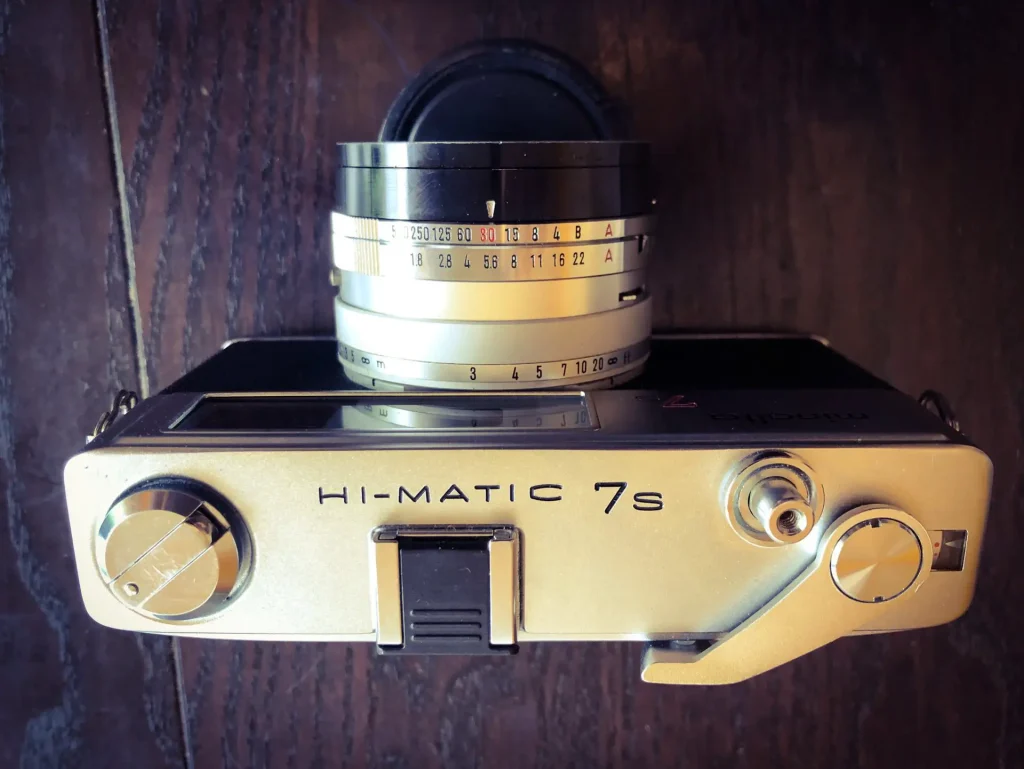
The film photography bug had bitten me. Over the next year and a half I’d acquire many more cameras, even dipping into compact point and shoots and SLRs. But the Hi-Matic 7s held sentimental value, as it’s the one that started me off on the journey. I thought I might give up the camera after I got an Olympus 35 RD, but I still loved the Minolta too much to part with it. It feels good in the hand and the shutter release feels and sounds so satisfying.
Since I like to take care of the things I love, I dropped off the Hi-Matic 7s at Advance Camera in February for a CLA (clean, lube, adjust). Besides a few minor things (loose-feeling lens barrel, Safe Load film indicator not working) there was nothing wrong with the camera. I just wanted to ensure this almost sixty year old machine would work for another decade or two.
I picked up my camera in mid-May, right before my partner Emee and I high-tailed it to Lost Lake, deep in the Cascade Mountains northeast of Mount Hood. The Minolta Hi-Matic 7s would be a good way to record the majesty of the area. While Mount Hood was not visible from the lake due to overcast skies, it was still beautiful.
After returning home, instead of getting scans from the developed film, I decided to do something special: I decided to go all analog.
One of the quandaries of this nouveau film era is there is usually digital somewhere in this analog process. For digital partisans it’s the “Gotcha” moment meant to prove what we film shooters do is ridiculous and pointless. “You digitally scan the negative after development? That’s like writing a letter by hand, then scanning it and emailing it to your recipient. How silly. Why not just use a digital camera instead?” Whatever. An end result in ones and zeros is fine, you still have all that natural grain on your negative.
Nor do I subscribe to the “The only real photo is a printed photo” dogma from some film shooters. One of the biggest benefits of scans for me has been seeing photos on a large computer screen rather than squinting for detail on a 3″x5″. When I saw my first Hi-Matic photos on my laptop, I was amazed at the sharpness and quality. (It doesn’t hurt that I use professional labs instead of the pharmacy.)
Despite what I said above, I do like prints. I have made prints out of many of the photos I’ve taken over the past year and a half. But those are usually from online services, the prints from digital JPEGs. Even if I decided to get prints instead of scans from my local lab, the prints will still be from scans. This is been the standard with minilab machines at least since the ’90s. If I wanted true optical prints, prints made from shining light through the negative onto light-sensitive paper, I’d need to either print myself or find a lab that does it “old school”. And there seem to be very, very few labs that will do it all analog.
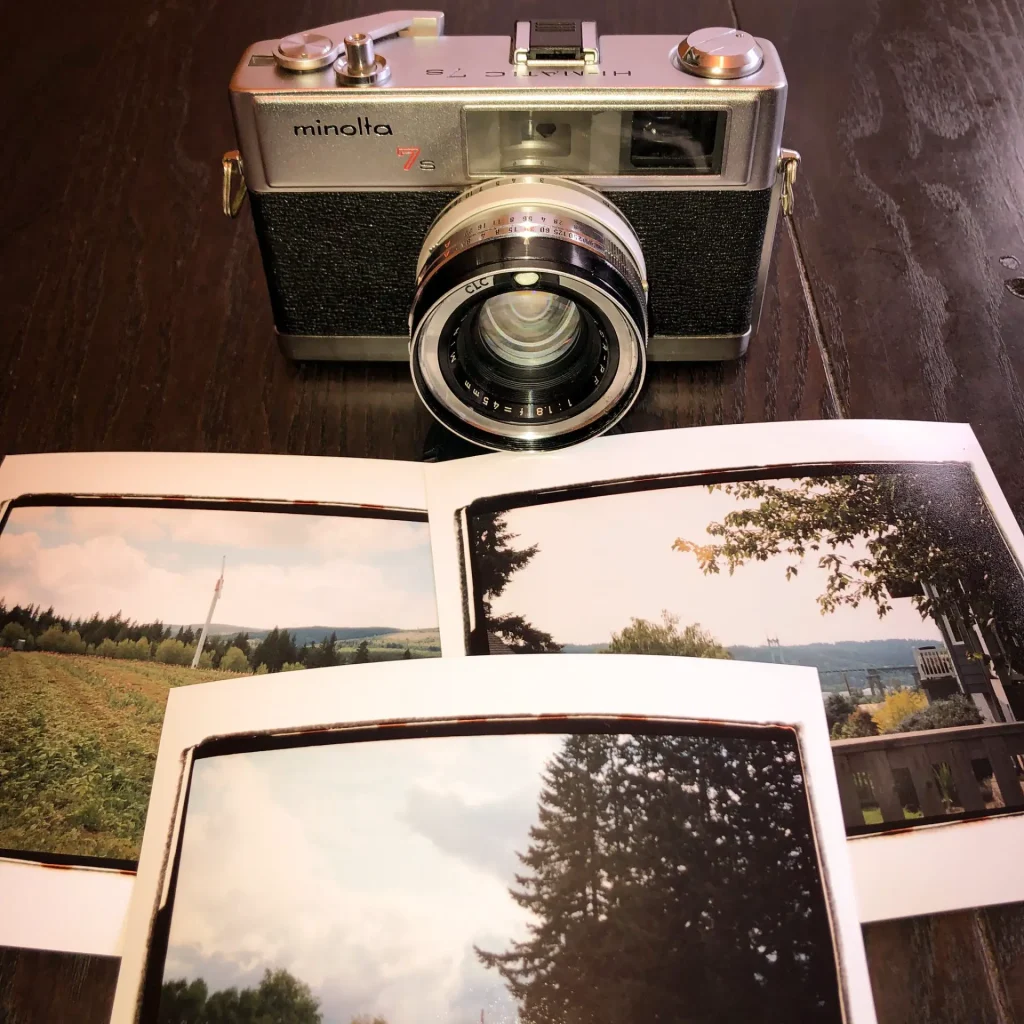
Thankfully, Portland has Blue Moon Camera, which still makes traditional optical prints! I biked the twelve miles (20 km) up to the St. Johns neighborhood and dropped off the couple rolls of Portra from the trip. (Hey, if I’m going to be fancy with optical prints, might as well go with fancy film!) A week later, I got the prints back and was again awed. The color and detail put the online printmakers to shame. I opted to get what Blue Moon calls “sloppy borders”, giving these prints even more of an analog feel. I like it. It won’t be what I do all the time, but when I want to treat myself again I’ll opt for optical prints.
Here are a few of the photos I got from that Lost Lake trip. Yes, I realize that these images are scans of the optical prints. (Dastardly digital strikes again!) But it’s not like I can invite all of you over to my house to check them out in person. Enjoy!
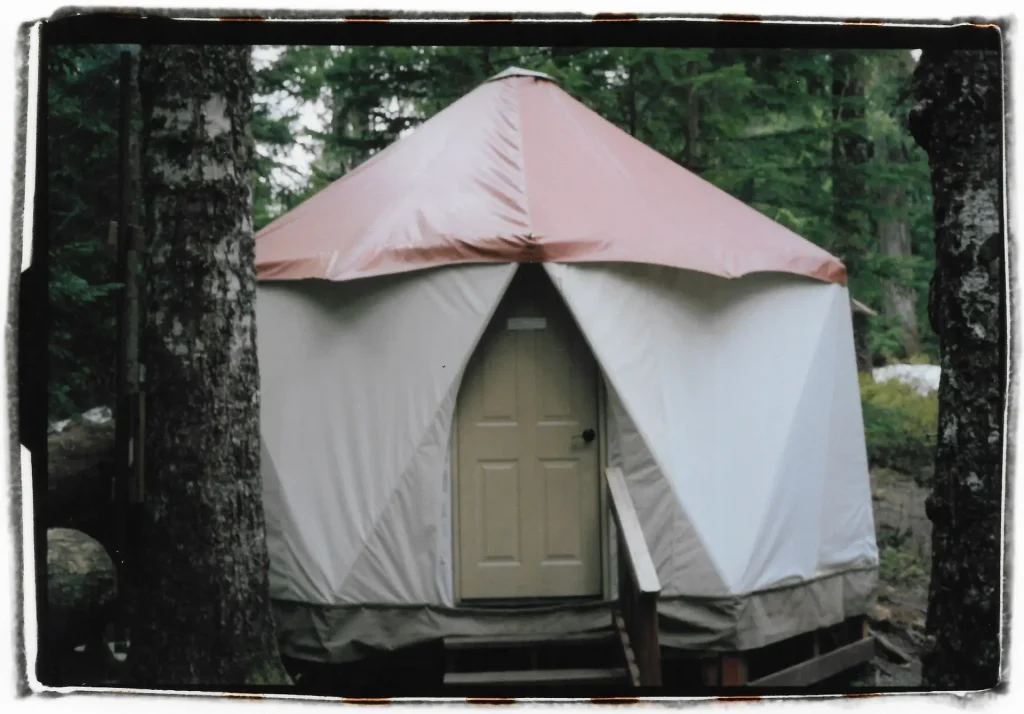
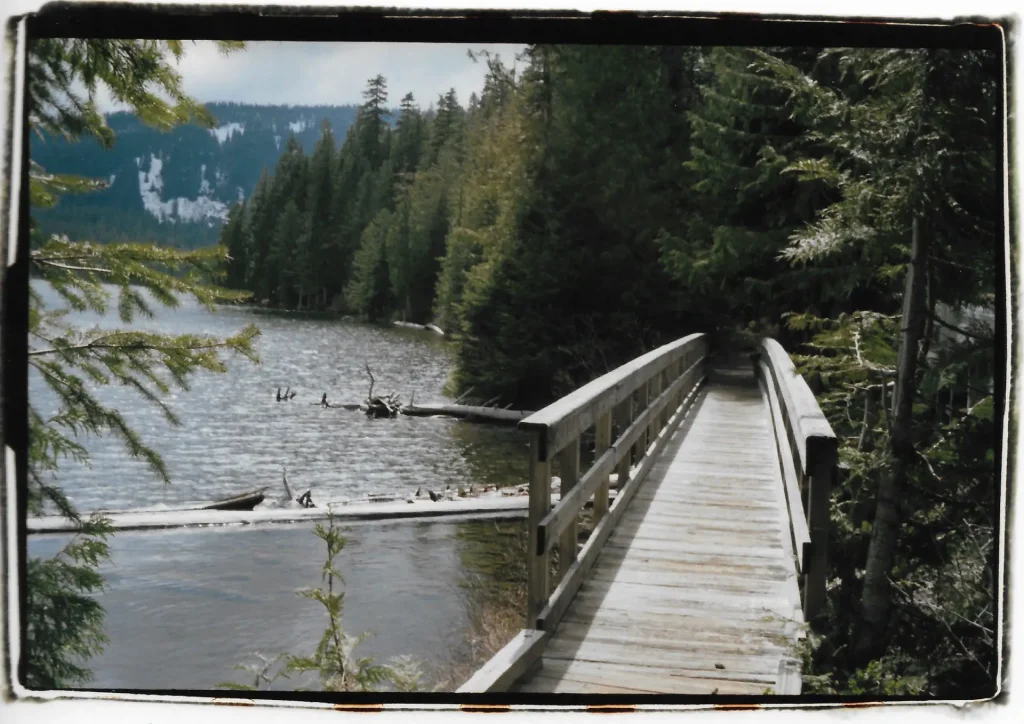
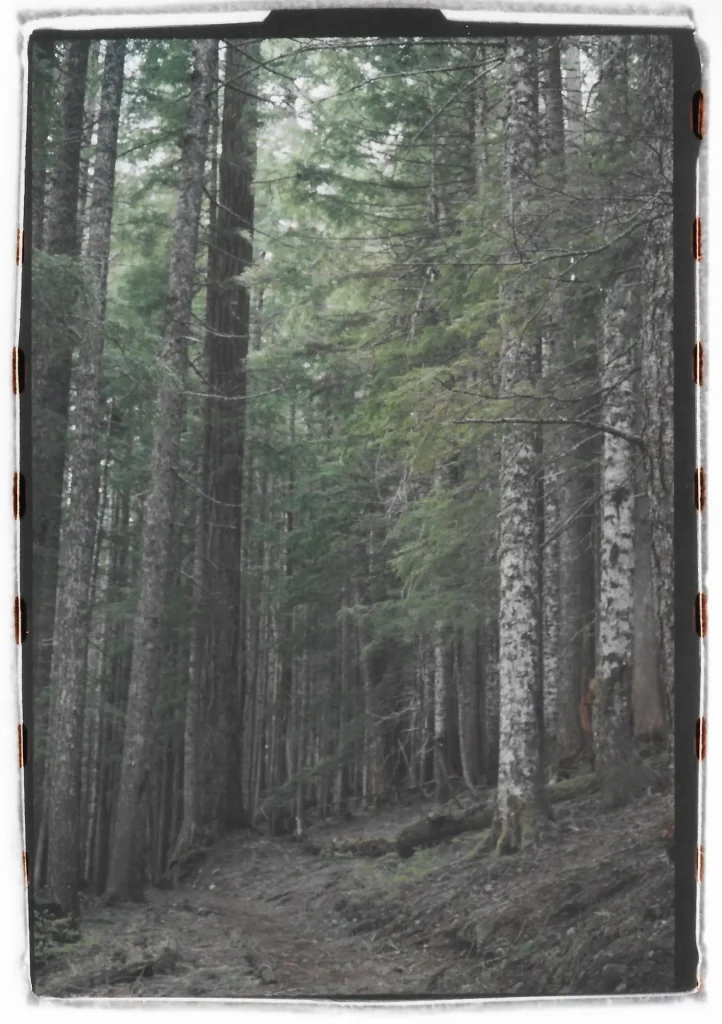
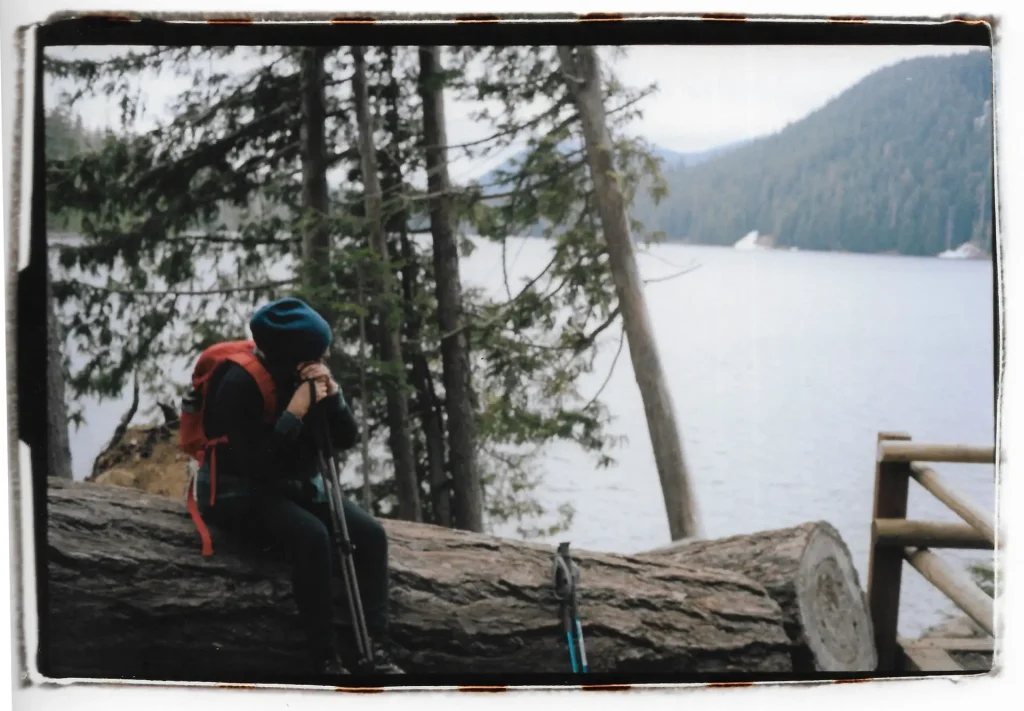
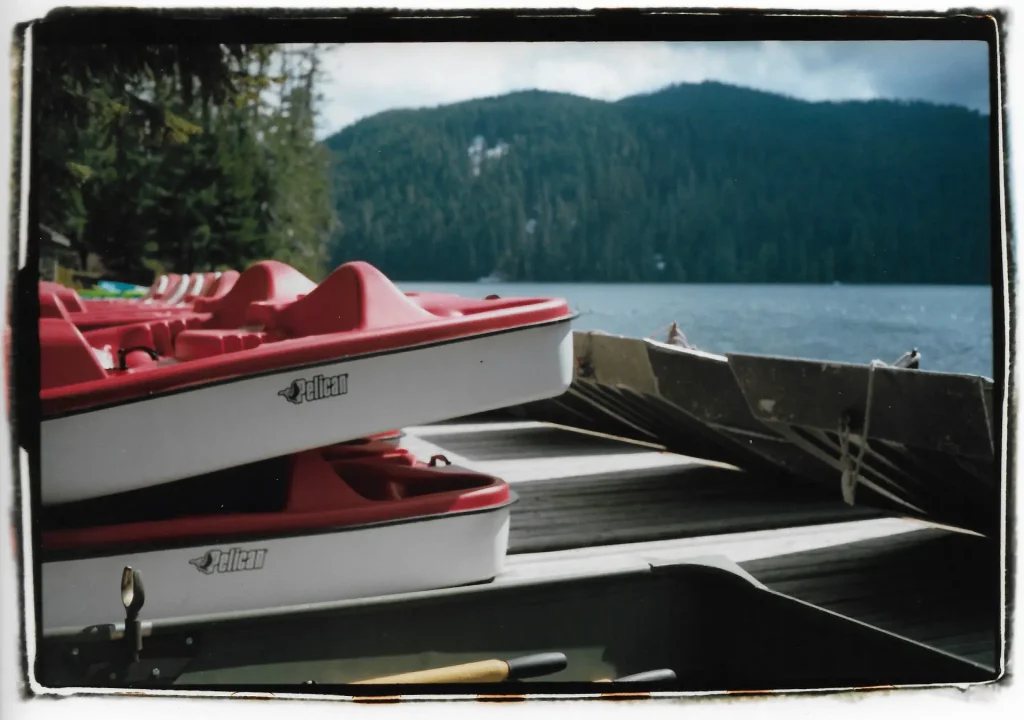
Thanks for reading! -Shawn
For a full set of photos from this Lost Lake trip, check out this flickr album. All my Minolta Hi-Matic 7s photos can be found in this flickr album.
Check out my blog and me elsewhere on the internet here.
Share this post:
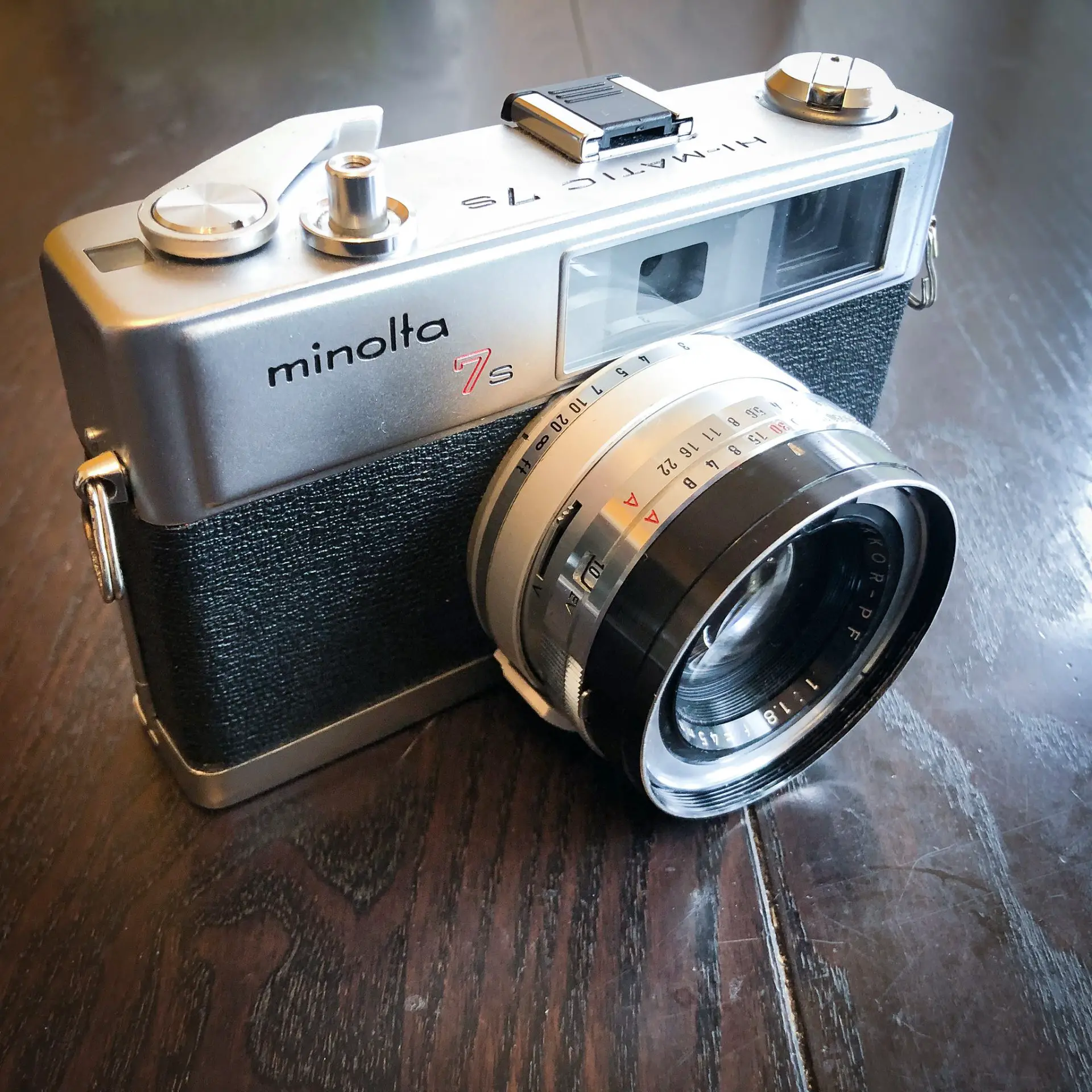








Comments
Mike on Minolta Hi-Matic 7s and A Sentimental Journey Discovering True Optical Prints – by Shawn Granton
Comment posted: 27/07/2021
Comment posted: 27/07/2021
Terry B on Minolta Hi-Matic 7s and A Sentimental Journey Discovering True Optical Prints – by Shawn Granton
Comment posted: 27/07/2021
I'm of the school that doesn't understand why someone would shoot film and then only view the result from a scan on a monitor. Of course, there are scanners, and there are scanners, so the results can be variable. When I first raised this with Hamish some time ago, he told me it gave him another option to use different films' characteristics in addition to his digital images. A fair point. And of course, my opinion doesn't take into account the haptic pleasure simply using and loading a film camera can give. I agree with this, as I no longer use my film cameras, 35mm and 6x6, and even my Fuji X-Pro 1 can't replicate the feel of my M6, for example.
As for prints, having done 40 years of DIY D&P, I do agree that inkjet prints can't compete with a traditional photographic print, but some digital prints come very close if not equalling or bettering them, especially where 35mm film is concerned. It all depends on the paper used. I'm not sure what paper labs in the US use, but a local UK lab uses Fuji Crystal Clear Archive and which is a paper with silver halide crystals, as does normal paper. The difference being it is exposed via lasers, not a conventional light source.
Out of curiosity, I had some digital 6x4 inch prints made of the roll of images from which 5 were extracted for my article "5 Frames in Ferrari Heaven" posted here on 35mmc just over 2 years ago. Despite my scans being at just 2820 dpi, when I compared the results with the original prints from way back when, I couldn't tell the difference.
I hope you continue to get pleasure from your Minolta 7S. Many of the better cameras from that era had cracking lenses, so enjoy.
Comment posted: 27/07/2021
John Collins on Minolta Hi-Matic 7s and A Sentimental Journey Discovering True Optical Prints – by Shawn Granton
Comment posted: 27/07/2021
John
John Bennett on Minolta Hi-Matic 7s and A Sentimental Journey Discovering True Optical Prints – by Shawn Granton
Comment posted: 27/07/2021
Another good article, Shawn. Keep it up!
Comment posted: 27/07/2021
Eric Rose on Minolta Hi-Matic 7s and A Sentimental Journey Discovering True Optical Prints – by Shawn Granton
Comment posted: 28/07/2021
I couple of years ago I was gifted a Hi-Matic 7s as my old one somehow got lost over the years. Can't wait to get it out! You have inspired me!!
Eric
Comment posted: 28/07/2021
Alan Jones on Minolta Hi-Matic 7s and A Sentimental Journey Discovering True Optical Prints – by Shawn Granton
Comment posted: 28/07/2021
Khürt L Williams on Minolta Hi-Matic 7s and A Sentimental Journey Discovering True Optical Prints – by Shawn Granton
Comment posted: 29/07/2021
It warms my heart to read things like that. Because for me, returning to film (Minolta X-700 and XD-11) after three decades was due mostly in part to falling in love with my Fuji X-T2. I have also fallen in love with Kodak Pro Image 100.
Thanks for the tip about Blue Moon Camera. I see that they do ECN-2 development as well, which will be useful for when I shoot my next roll of Kodak Vision3 250D.
Jens Knappe on Minolta Hi-Matic 7s and A Sentimental Journey Discovering True Optical Prints – by Shawn Granton
Comment posted: 17/02/2022
Like your diary drawings very much.
For my opinion very interesting Minolta SR-T 101 Pictures in your stream too.
Comment posted: 17/02/2022
Wilson Hoyer on Minolta Hi-Matic 7s and A Sentimental Journey Discovering True Optical Prints – by Shawn Granton
Comment posted: 06/03/2022
- Wilson
Comment posted: 06/03/2022
Comment posted: 06/03/2022
Comment posted: 06/03/2022
Comment posted: 06/03/2022
Comment posted: 06/03/2022
A June film photography update: Reaching capacity, again – Urban Adventure League on Minolta Hi-Matic 7s and A Sentimental Journey Discovering True Optical Prints – by Shawn Granton
Comment posted: 16/06/2022
Tyler on Minolta Hi-Matic 7s and A Sentimental Journey Discovering True Optical Prints – by Shawn Granton
Comment posted: 09/08/2022
The 7s did have some good features. As a rangefinder, it was simple and light to carry. It of course was half the price of an SLR. I believe the electronic flash synced at all speeds. The meter and manual settings (EV number) were very easy to do which was important to me. Indeed, most often I wanted to set it myself, such as a high shutter speed to freeze motion or a low shutter and small aperture to maximize depth of field.
I miss shooting in film, but buying film, processing, and printing, became too expensive and cumbersome. With digital, a major feature is automatic light source correction, so no longer do I need to use a light-hogging filter for fluorescent or tungsten lighting. No more of that ugly green cast on my slides. And I often share my pics via email which is easy with digital. Basic editing with simple software is easy on the computer with digital. With film and color slides, you got what you got. (But cue Paul Simon and "Kodachrome").
I don't believe I ever shot b&w prints with the 7s. I suspect it would've done a good job with that since b&w prints can be enlarged and cropped. In later years with my Nikon, I did a little with Kodak's Plus-X, a slower film than Tri-X, and got excellent results.
Comment posted: 09/08/2022
Comment posted: 09/08/2022
Comment posted: 09/08/2022
Comment posted: 09/08/2022
Niels Winther Klausen on Minolta Hi-Matic 7s and A Sentimental Journey Discovering True Optical Prints – by Shawn Granton
Comment posted: 11/08/2022
Anyways I rather like the 45mm lens, it has a very nice character and it is plenty sharp, if not something else is wrong!
I also do not mind how rangefinders work, no you cannot get up close or all of that, you can take very nice photos if you want.
It is for different work than a slr camera.
I use slr's and a TLR plus one P&S and the rangefinder, they are all fun to use in their own way!
Also shoot digital, mostly with old lenses on an adapter, I use that for other stuff as I prefer using film.
Comment posted: 11/08/2022
Steptoe Edwall on Minolta Hi-Matic 7s and A Sentimental Journey Discovering True Optical Prints – by Shawn Granton
Comment posted: 28/01/2023